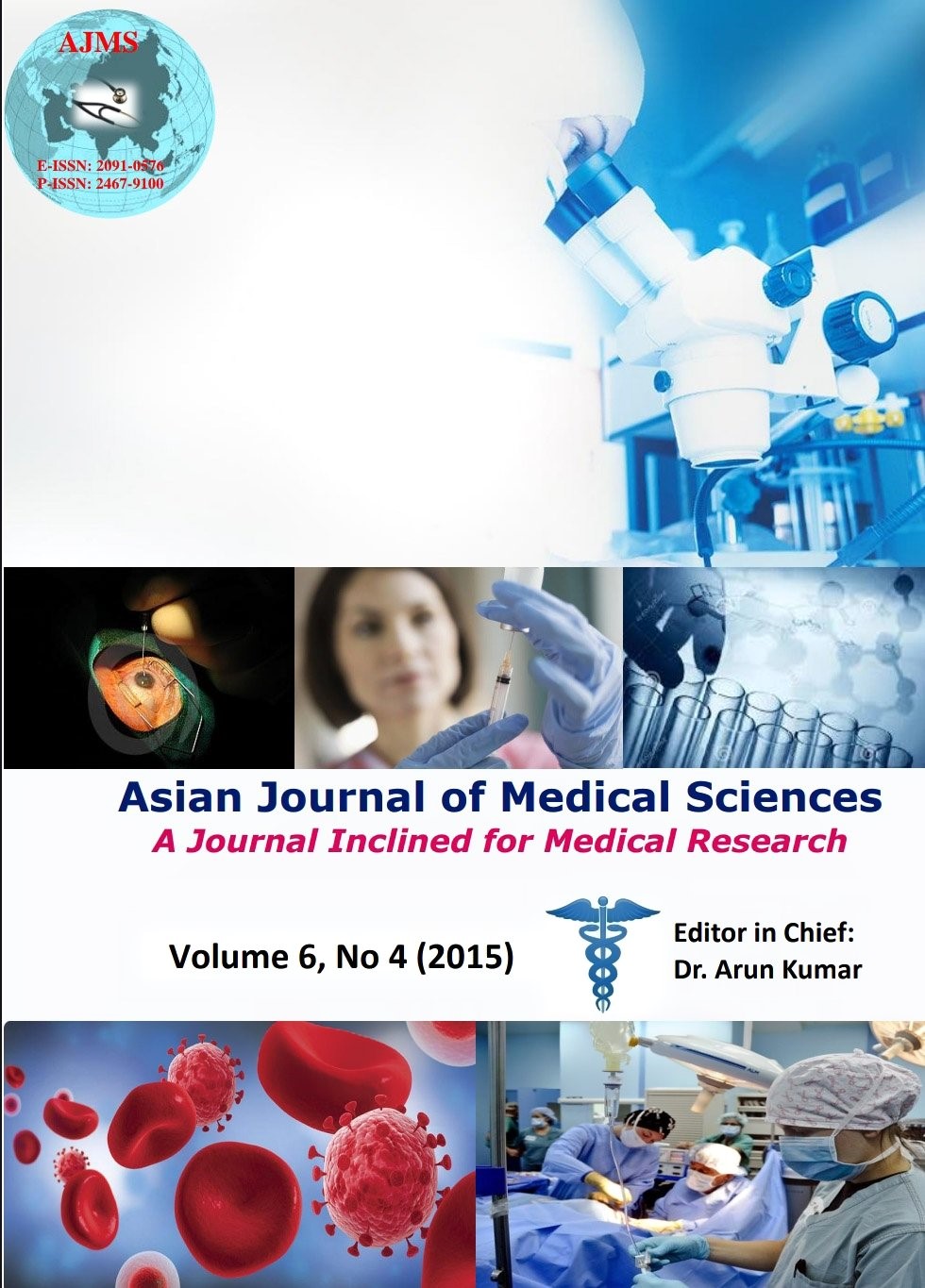Trend of tuberculosis and performance evaluation of new sputum positive tuberculosis from Satara district, India
Keywords:
Tuberculosis, RNTCP, HIV, evaluationAbstract
Background: Tuberculosis (TB) has remained a major public health threat worldwide and considering this, Govt. of India declared TB as notifiable disease in year 2012.
Objectives: To assess the trend of TB in Satara district, India and to evaluate outcome of new sputum positive TB cases registered under district Revised National Tuberculosis Control Programme (RNTCP).
Materials and Methods: A retrospective record based cross-sectional study was conducted in District Tuberculosis Centre (DTC), Satara district, Maharashtra, India during March 2013. All Registered TB cases under DTC from the year 2002 to 2012 were included as study subjects. The district RNTCP records since the year 2002-2012, for all TB cases were viewed and analyzed by investigator according to RNTCP outcome evaluation indicators. The trend of TB was statistically analyzed for the period of eleven years by using chi-square trend test.
Results: Annual the total TB case detection rate was 117.94/ lakh for year 2002 which decreased to 98.30 / lakh for year 2012. The proportions of pulmonary TB cases decreased from 92.23% to 81.0% since year 2002 to 2012 whereas proportions of HIV-reactive TB cases increased from 3.11% to 25.3% since year 2009 to 2011.Proportions of male TB cases were almost the double of females; however child TB cases increased continuously with maximum TB cases belonged to pulmonary type. The proportional trend of New Sputum Positive (NSP) cases showed periodic fluctuations ranging from 34% to 50% since year 2002 to 2012. The performance of outcome evaluation indicators of NSP cases during evaluation period as viz., cure rate ranging from 79.91% to 87.02% with periodic fluctuations, sputum conversion rate continuously increased from 78.5% to 93.5%,treatment success rate ranging from 82.7% to 90% with apparent difference, whereas defaulter rate decreased from 7.5% to 3.8% by year 2011, treatment failure rate continuously decreased to 2.1% whereas Death rate ranging from 5.2% to 10.4%. The proportional trends of outcome evaluation indicators of NSP-TB cases showed statistically significant difference over period of year 2002 to 2012.
Conclusion: Data indicates that TB is still big problem in rural area of western Maharashtra, India and need to strengthen the awareness programme about TB and involvement of private health sector to control the burden of TB.
DOI: http://dx.doi.org/10.3126/ajms.v6i4.11112
Asian Journal of Medical Sciences Vol.6(4) 2015 30-35
Downloads
Downloads
Additional Files
Published
How to Cite
Issue
Section
License
Authors who publish with this journal agree to the following terms:
- The journal holds copyright and publishes the work under a Creative Commons CC-BY-NC license that permits use, distribution and reprduction in any medium, provided the original work is properly cited and is not used for commercial purposes. The journal should be recognised as the original publisher of this work.
- Authors are able to enter into separate, additional contractual arrangements for the non-exclusive distribution of the journal's published version of the work (e.g., post it to an institutional repository or publish it in a book), with an acknowledgement of its initial publication in this journal.
- Authors are permitted and encouraged to post their work online (e.g., in institutional repositories or on their website) prior to and during the submission process, as it can lead to productive exchanges, as well as earlier and greater citation of published work (See The Effect of Open Access).




